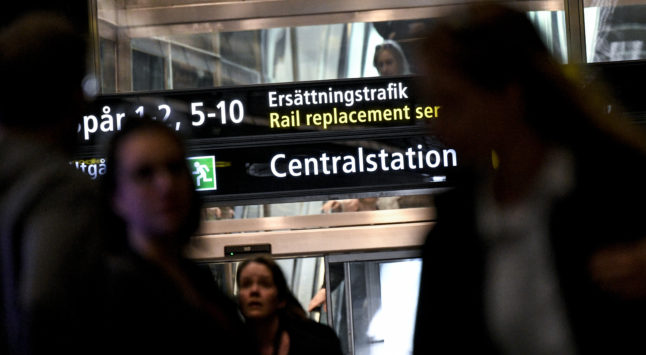On Thursday evening we reported on the severe delays and cancellations which affected most of the Swedish railway network south of Norrland. On Friday, most trains were back up and running as normal.
However, there have been some train delays in and around Örebro due to an electrical fault just south of the city lingering on from Thursday. At the time of writing, they have not yet been able to fix the failure, and acording to TT, this is mostly affecting regional trains between Uppsala, Stockholm C and Örebro and between Hallsberg, Borlänge and Gävle.
There are also reports of a signal failure between Linköping and Nörrköping.
The cause of Thursday’s disruptions, which affected all train operators between Stockholm and Gothenburg, was a combination of a series of incidents including a power outage, and a fire in the vicinity of Hallsberg. Trains between Stockholm and Malmo were also affected.
By 5:40pm, SJ said their trains were back in operation.
Was your train delayed or cancelled?
If your train was canceled or delayed, you might be entitled to claim compensation, under EU passenger protection regulation.
For long-distance train journeys of 150km or more the following compensation is available:
- Compensation of 25 percent of the original ticket price if the delay was between one and two hours.
- If the delay was more than two hours long, calculated from the estimated time of arrival on your ticket to the time you actually arrive, you are entitled to be compensated with 50 percent of the original price of the ticket.
If the journey was less than 150km in distance, the compensation is higher:
- In the event of a 20-minute delay, you can receive a refund of 50 percent of the ticket price.
- In the event of a 40-minute delay, your refund corresponds to 75 percent of the ticket price.
- In the event of a 60-minute delay, you can get the entire ticket price refunded.
How to claim for compensation?
In order to claim compensation for your delay you need to contact the train company you travelled with, fill in the form and submit proof of travel.
These are the links to claim for compensation on the main train companies that operate in Sweden:
- SJ
- MTRX (only available in Swedish). The company says on their website that their customer service is overwhelmed with compensation requests and that they will “compensate all passengers automatically for the delays of the 21st of July 2022”
- Flixtrain
- Snälltåget
- Vy (Sweden)
Due to the number of requests, this process might take a bit longer than usual, but you should get your refund in cash by bank transfer eventially.
Is your journey currently being disrupted?
If your train journey is currently being disrupted and the delays are predicted to last an hour or more, you are also entitled to refreshments on board the train or vouchers at the station so that you can buy a snack whilst you wait.
It is the train operator’s responsibility to make sure you reach your final destination and to book you free of charge onto another train or bus and also to pay for your hotel if the only solution is to travel the following day.
For more information on passenger rights for traveling by train, plane, bus or ferry within the European Union check the page on Passenger Rights on the EU’s website.



 Please whitelist us to continue reading.
Please whitelist us to continue reading.
Member comments